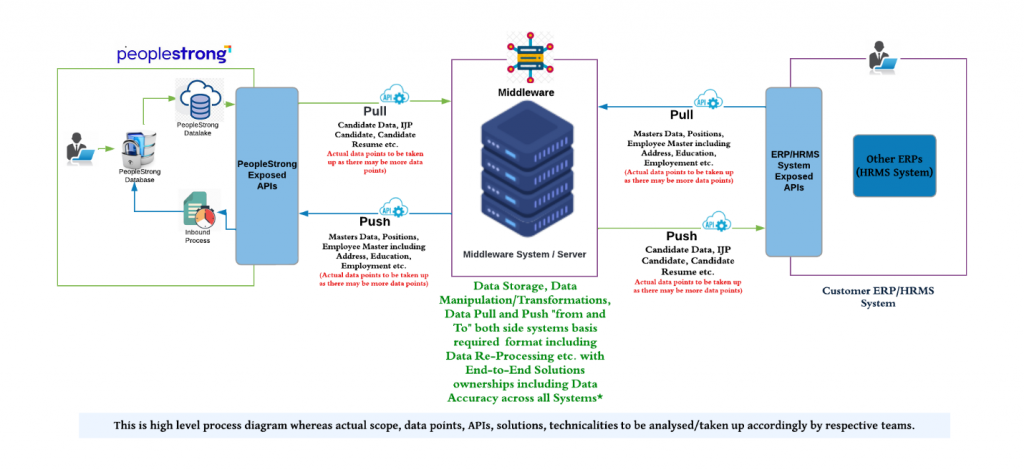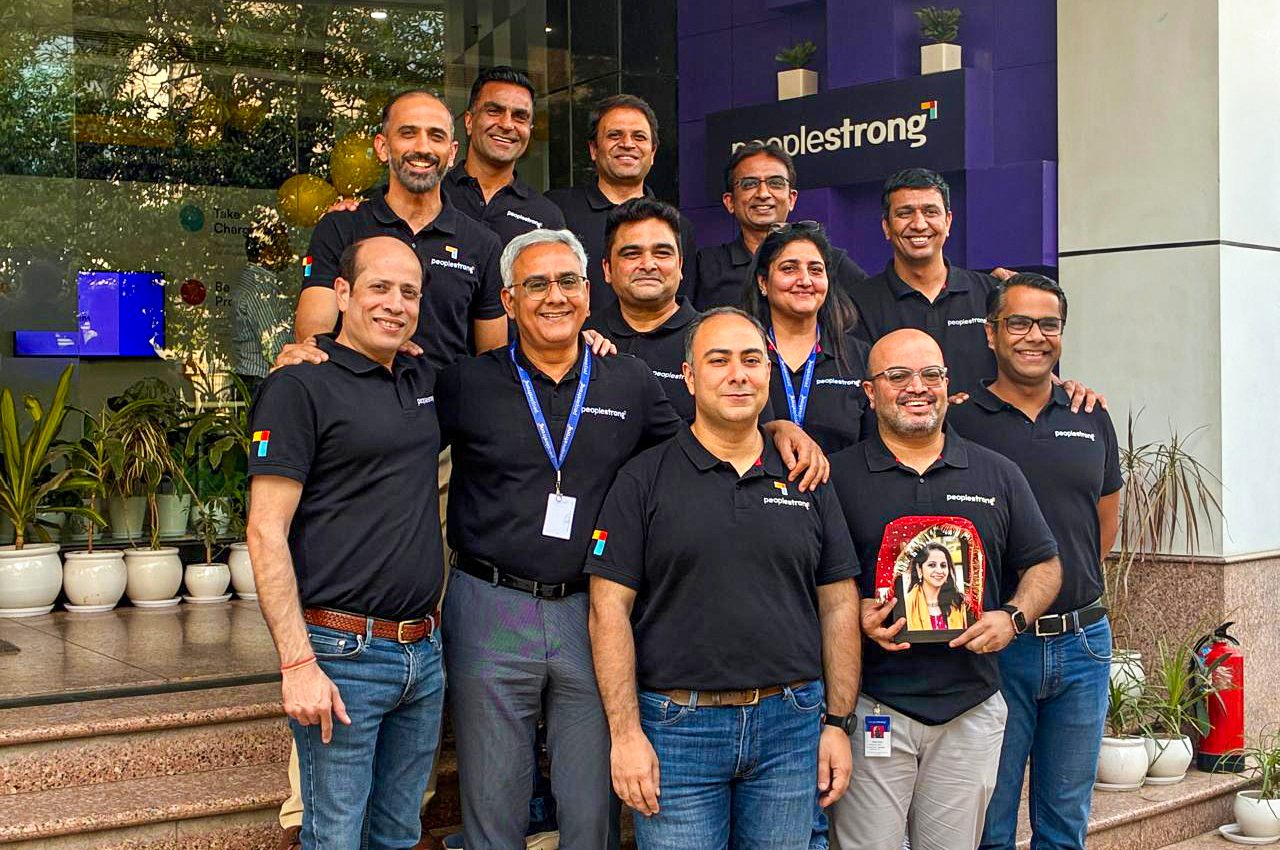Do you have an API? Fantastic! But what about the implementation and integration of your organization’s API with external partners? Each organization maintains its own API with a distinct format. For example, if one system sends data as “EmployeeCode:123,” while another expects “EmpCode:123,”. This is where the orchestration layer comes into play, it steps into harmonizing the communication.
The orchestration layer serves to retrieve data from the API of one organization and seamlessly transmit it to another organization. Let’s explore the orchestration layer and its capabilities.
What is an Orchestration layer?
Orchestration layer adds the ability to manage data transformation between separate services. Especially, where requests and responses need to be split, merged or routed. For example, If PeopleStrong exposes gender attribute in its employee API as “Gender: Male “but the client requests “Gender: M”. The Orchestration layer will cater to this kind of case.
Moreover, the Orchestration layer serves as a comprehensive solution encompassing data storage, data pull, and push capabilities. It facilitates seamless data exchange between disparate systems, ensuring compatibility and accuracy across all endpoints. Whether it’s retrieving data from external sources or transmitting it to downstream systems, the Orchestration layer orchestrates the entire process with end-to-end solution ownership.
With its robust data reprocessing capabilities, the Orchestration layer ensures that any data discrepancies or errors are promptly addressed. It can identify and rectify inconsistencies in data formats, ensuring data accuracy across all systems. Additionally, the Orchestration layer handles data storage efficiently, providing a centralized repository for storing and accessing data as needed.
In essence, the Orchestration layer serves as a versatile solution for managing data transformation, storage, and exchange, with a focus on maintaining data accuracy and integrity across all system interactions. It will provide you with multiple benefits as shown below to the implementation of your organization API.
- Data Transformation: Say goodbye to data format discrepancies! The orchestration layer excels in data transformation, resolving discrepancies in data formats. Imagine a scenario when onboarding employees from multiple sources with varying date formats. The orchestration layer can transform these varying date formats into a standardized format, ensuring consistency and compatibility across the organization’s systems.
- Single source multiple destination: Consider an HR-Tech platform that receives a new employee onboarding request. With the orchestration layer, this single request can trigger multiple actions, such as updating employee records in the HR database, provisioning access to internal systems, and notifying relevant stakeholders without manual intervention.
- Multiple Requests to Single Unification: In a multinational corporation, employee data may reside in different HRIS systems across regions, including payroll systems, talent management platforms, and attendance tracking tools. The orchestration layer can aggregate data from these disparate sources, presenting HR managers with a unified view of employee profiles, performance evaluations, and compensation details.
- Multi-Format Producer Endpoint: Suppose a HR-Tech firm needs to generate compliance reports for different regulatory authorities—CSV format for tax filings, XML format for benefits enrollment, and JSON format for workforce analytics. The orchestration layer can dynamically generate these reports in the required formats, pulling data from the organization’s HRIS databases and APIs.
- Multi-Format Consumer: In a HR-Tech ecosystem, employee data may flow from various sources, including applicant tracking systems, background check providers, and learning management systems. The orchestration layer can ingest this data in different formats, standardizing it before processing and forwarding it to HR analytics tools, payroll processors, and employee self-service portals.
- File Conversion: File Conversion feature facilitates smooth transitions between APIs and SFTP formats, while also supporting the generation of various outbound file types such as CSV, XLS, XML, TXT, XLSX, JSON, etc. It streamlines data exchange processes and enhances workflow integration, ensuring adaptability and efficiency in data handling.
- Authentication and Authorization: Security is paramount in the digital era, and the orchestration layer plays a pivotal role in managing authentication. It ensures that only authorized entities gain access to the API, safeguarding sensitive data and preventing unauthorized breaches. Furthermore, it incorporates logging mechanisms to track access attempts, data modifications, and system events, providing a comprehensive audit trail for compliance purposes and facilitating troubleshooting and analysis of security incidents.
- Server management: Efficient server management is crucial for seamless API integration. The orchestration layer handles the distribution of requests, optimizes performance, and ensures that the system operates at its peak efficiency.

Advantages of Leveraging the Orchestration Layer
- Efficiency and Consistency: The orchestration layer brings efficiency and consistency to data processing, eliminating disparities and ensuring a seamless flow of information.
- Error handling and logging: The orchestration layer provides a centralized location for handling errors and logging, making it easier to identify and troubleshoot issues within the integration process. Detailed logs enable quick diagnosis of problems, helping developers and administrators understand the flow of data and pinpoint any failures.
- Distributed transaction: Orchestrating complex transactions across multiple systems becomes more manageable, with the orchestration layer ensuring that either all or none of the steps in a transaction are executed, maintaining data consistency.
- Flexibility: Organizations can adapt to changes effortlessly, as the orchestration layer handles the complexities of different data formats and protocols.
- Scalability: As the organization grows, the orchestration layer scales with it, accommodating increased data volumes and evolving integration needs.
- Enhanced Security: Robust authentication mechanisms and secure data handling make the orchestration layer a guardian of data integrity and confidentiality.
Conclusion
API integration directs the smooth flow of data, harmonizes different systems, and enables organizations to fully leverage their APIs. In the ongoing journey through the complex landscape of digital connectivity, the orchestration layer stands out as a crucial ally, simplifying intricacies and driving PeopleStrong Technologies Ltd towards a future marked by efficient, secure, and scalable integration. Like a conductor leading a symphony to new heights, the orchestration layer commands the spotlight, ensuring each data note resonates in harmony, delivering a synchronized experience across the organization.
Ready to orchestrate your HR tech integration journey? Contact us today to embark on your journey towards optimized HR technology integration.












